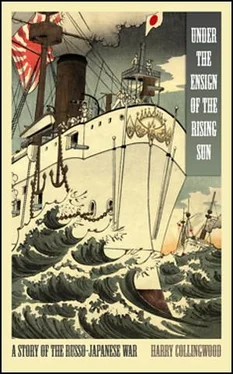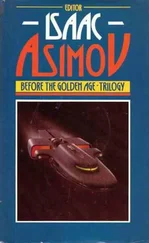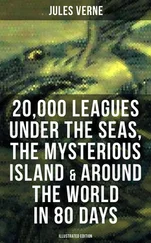Harry Collingwood - Under the Ensign of the Rising Sun
Здесь есть возможность читать онлайн «Harry Collingwood - Under the Ensign of the Rising Sun» весь текст электронной книги совершенно бесплатно (целиком полную версию без сокращений). В некоторых случаях можно слушать аудио, скачать через торрент в формате fb2 и присутствует краткое содержание. Год выпуска: 1916, Жанр: nonf_military, на английском языке. Описание произведения, (предисловие) а так же отзывы посетителей доступны на портале библиотеки ЛибКат.
- Название:Under the Ensign of the Rising Sun
- Автор:
- Жанр:
- Год:1916
- ISBN:нет данных
- Рейтинг книги:4 / 5. Голосов: 1
-
Избранное:Добавить в избранное
- Отзывы:
-
Ваша оценка:
- 80
- 1
- 2
- 3
- 4
- 5
Under the Ensign of the Rising Sun: краткое содержание, описание и аннотация
Предлагаем к чтению аннотацию, описание, краткое содержание или предисловие (зависит от того, что написал сам автор книги «Under the Ensign of the Rising Sun»). Если вы не нашли необходимую информацию о книге — напишите в комментариях, мы постараемся отыскать её.
Under the Ensign of the Rising Sun — читать онлайн бесплатно полную книгу (весь текст) целиком
Ниже представлен текст книги, разбитый по страницам. Система сохранения места последней прочитанной страницы, позволяет с удобством читать онлайн бесплатно книгу «Under the Ensign of the Rising Sun», без необходимости каждый раз заново искать на чём Вы остановились. Поставьте закладку, и сможете в любой момент перейти на страницу, на которой закончили чтение.
Интервал:
Закладка:
The importance of the defeat of the Port Arthur fleet, indecisive as it had at first seemed to be, soon began to be realised when our secret agents in the fortress sent us complete and carefully ascertained information relative to the condition of the ships which had succeeded in regaining the shelter of the harbour. From this information it at once became apparent that, as fighting units, none of them could again be made of service until the conclusion of the war, and Japan heaved a great sigh of relief, which was intensified when, on the evening of 14th August, the news was flashed through the country that the gallant and sorely tried Kamimura had at last been granted his long-cherished wish to meet the Vladivostock squadron, and had defeated it. True, the defeat, like that of the Port Arthur fleet, was not as decisive as could have been wished; for of the three cruisers—the Gromovoi, Rossia , and Runk —which sallied forth from Vladivostock, under the command of Admiral Jessen, in response to Admiral Vitgeft’s call for support in his last desperate sortie from Port Arthur, two of them, the Gromovoi and the Rossia , succeeded in regaining the shelter of Vladivostock harbour, while only the Rurik , the least formidable of the trio, was sunk. But again, as in the case of the Port Arthur fleet, although the bulk of the Russian force contrived to escape either capture or destruction, it had been so severely handled as to be rendered innocuous for many months to come, and Japan was at last free from the continual menace of it. The destruction of the fast cruiser Novik in Korsakovsk harbour on 21st August, by the Japanese ship Chitose , drove the last nail in the coffin of Russia’s naval power in the Far East; and from that time forward, with the exception of maintaining the effective blockade of Port Arthur, the Japanese navy had little to do except prepare itself at every point to meet the menace of the Baltic Fleet, which at this time was beginning to materialise and take definite shape.
Meanwhile, after almost superhuman struggles against enormous odds, and in the face of frightful sufferings and losses, Japan’s land forces were beginning to make progress. During the last days of July General Kuroki’s forces fought and won the battles of Towan and the Yushuling Pass. On 3rd August, General Oku seized Hai-cheng and Newchwang old town, which is situated some twenty miles inland from the port of Newchwang; and then there came a pause, during which the final preparations for the advance upon Liao-yang were being completed.
Liao-yang promised to be a very tough nut to crack, for General Kuropatkin, fully recognising the possibilities of the position, had determined to make his stand there and inflict upon the Japanese such a crushing defeat that all further capacity for taking the offensive would be driven out of them, after which, the subjugation of a beaten and disheartened enemy should prove an easy task, rendered all the easier, perhaps, by the fact that the great assault upon Port Arthur by the Japanese had failed disastrously, with frightful loss to the assailants. The defences of Liao-yang were of great extent and enormous strength, including not only formidable forts and earthworks armed with powerful guns, and mile upon mile of most carefully and elaborately constructed trenches, but also with innumerable pitfalls, each with its sharpened stake at the bottom, as in the case of the Nanshan Heights defences. These pitfalls were arranged in regular lines, interrupted at intervals by patches of mined ground, while outside these again there ran a practically continuous girdle of barbed wire entanglements, the wire being charged with an electric current powerful enough to instantly destroy any one who should be unfortunate enough to come into contact with it. Liao-yang defences were, in fact, a repetition of the defences of the Nanshan Heights—where the Japanese suffered such appalling losses—except that they were of an even more elaborate and deadly character.
The attack upon Liao-yang was indeed in many respects a repetition of the attack upon Kinchau; for, as in the case of Kinchau, there was a formidable hill position—that of Shushan—to be first stormed and taken. This task was entrusted to the Second Japanese Army, under the leadership of General Oku; and they accomplished it on 1st September, after three nights and two days of desperate fighting, in the course of which the heroic Japanese suffered frightful losses. On the same day, the Russians began to withdraw from Liao-yang under a heavy fire from the Japanese artillery. On the following day the Japanese captured the Yentai mines; and a few hours later, General Nodzu, at the head of the Fourth Japanese Army, entered the town of Liao-yang unopposed.
Meanwhile, what was the state of affairs on land before Port Arthur?
As has already been said, the great general assault upon the land defences, which began on 19th August 1904, resulted in disastrous failure with frightful losses for the Japanese. Yet that failure, terrible as it was, was not by any means complete; its blackness was irradiated by a gleam of light here and there which sufficed to keep alive that spirit of hope and indomitable resolution which no misfortune could ever quite quench in the breast of the Japanese, and which was undoubtedly the determining factor in the campaign. To particularise. On 14th August the 1st Japanese Division was ordered to capture the five redoubts on the crest of the ridge west of the railway, known as the Swishiying redoubts. These redoubts were taken on the following day, and their capture paved the way for the general assault, four days later. This began with the furious bombardment of the height known as 174 Metre Hill, which was stormed and taken at the point of the bayonet, later in the day, by the 1st Division, which immediately pushed south-east, with the object of gaining possession of Namaokayama, or 180 Metre Hill. This hill was protected by, among other devices, an intricate barbed wire entanglement charged with a high-tension electric current, the penetration of which proved to be a task of almost insuperable difficulty; nevertheless, it was eventually accomplished. On the morning of 22nd August, by a splendid act of heroism and self-sacrifice on the part of fifty Japanese, West Panlung fort was captured, and this cleared the way for the capture of the East fort. But the superhuman efforts made by the Japanese in capturing these positions completely exhausted them, with the result that the assault ended in failure, since the majority of the defences remained in the hands of the Russians.
On 23rd August, the battleship Sevastopol —which, it will be remembered, was one of the ships which contrived to make good her escape from the Japanese fleet after the battle of the Yellow Sea—having been patched-up, as far as the resources of Port Arthur dockyard would allow, got under way and, steaming round to Takhe Bay, proceeded to shell the Japanese lines in the neighbourhood of Ta-ku-Shan and the Panlung redoubts. It was a rather daring thing to do, for there was not a ship in the harbour capable of supporting her, while the Japanese blockading squadron in the offing was close enough in to be clearly visible from the heights. Included in that squadron were the new armoured cruisers Nisshin and Kasuga , purchased from the Argentine just before the declaration of war; and no sooner was it seen that the Sevastopol had actually ventured outside the harbour, than these two powerful craft steamed in and opened fire upon her, and also upon the Laolutze forts, which were supporting her. The approach of the Japanese cruisers was the signal for a hurried retirement on the part of the Russian battleship, and she lost no time in effecting her retreat to the harbour. But while entering, she struck a contact mine, which exploded beneath her bows, inflicting such serious damage that it was only with very great difficulty she succeeded in returning to her berth, with her bow almost completely submerged. This was the last straw, so far as the Sevastopol was concerned, and she was practically put out of action for the remainder of the war.
Читать дальшеИнтервал:
Закладка:
Похожие книги на «Under the Ensign of the Rising Sun»
Представляем Вашему вниманию похожие книги на «Under the Ensign of the Rising Sun» списком для выбора. Мы отобрали схожую по названию и смыслу литературу в надежде предоставить читателям больше вариантов отыскать новые, интересные, ещё непрочитанные произведения.
Обсуждение, отзывы о книге «Under the Ensign of the Rising Sun» и просто собственные мнения читателей. Оставьте ваши комментарии, напишите, что Вы думаете о произведении, его смысле или главных героях. Укажите что конкретно понравилось, а что нет, и почему Вы так считаете.












